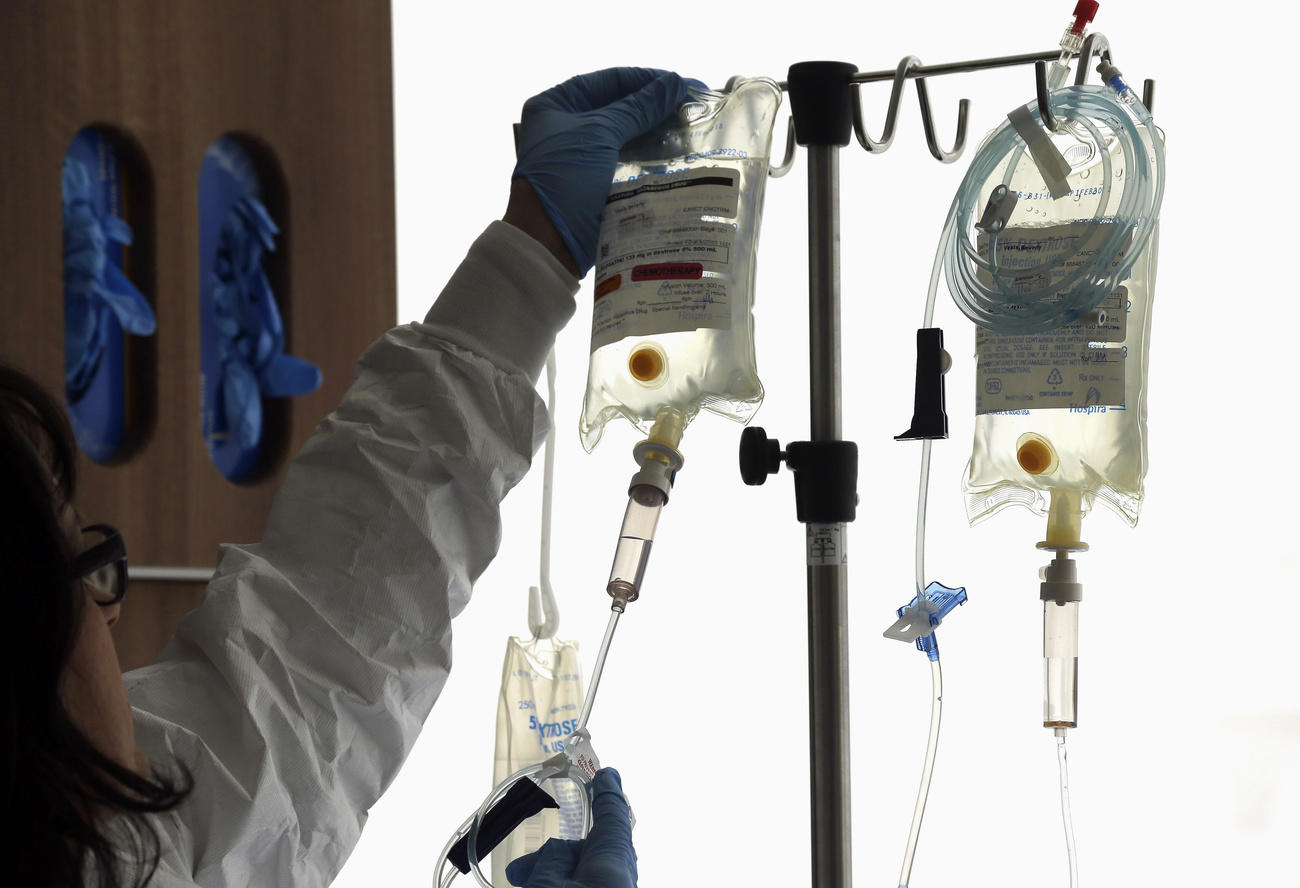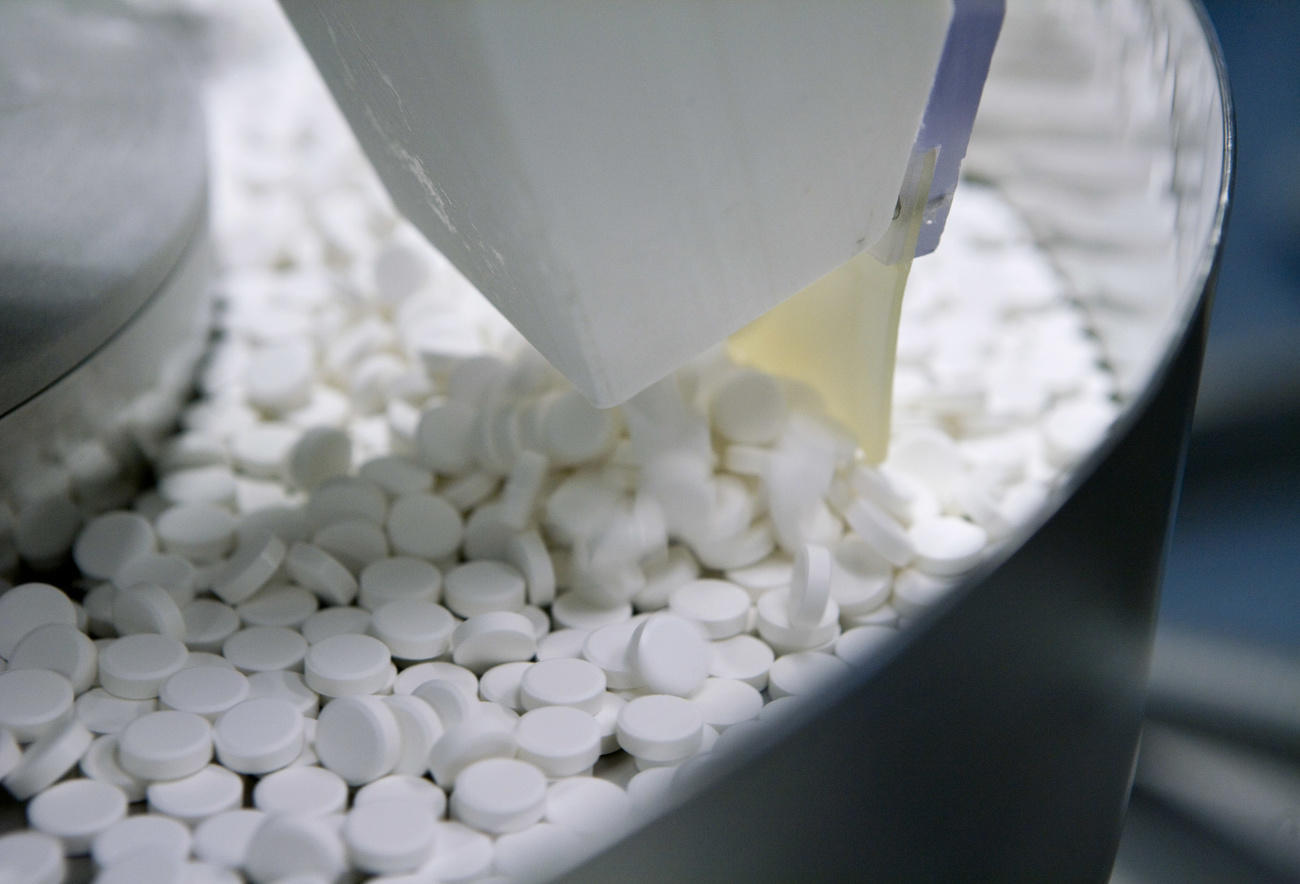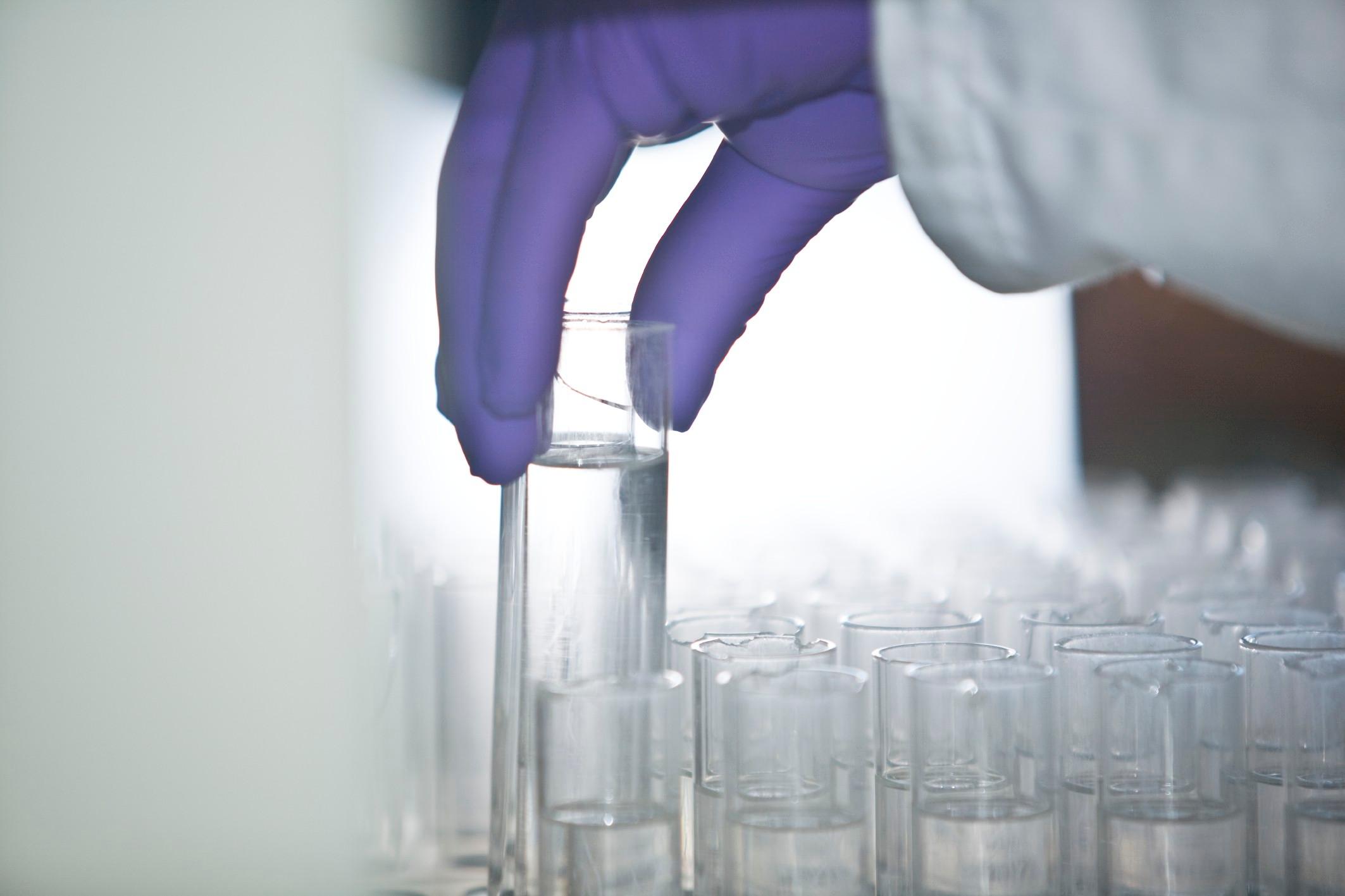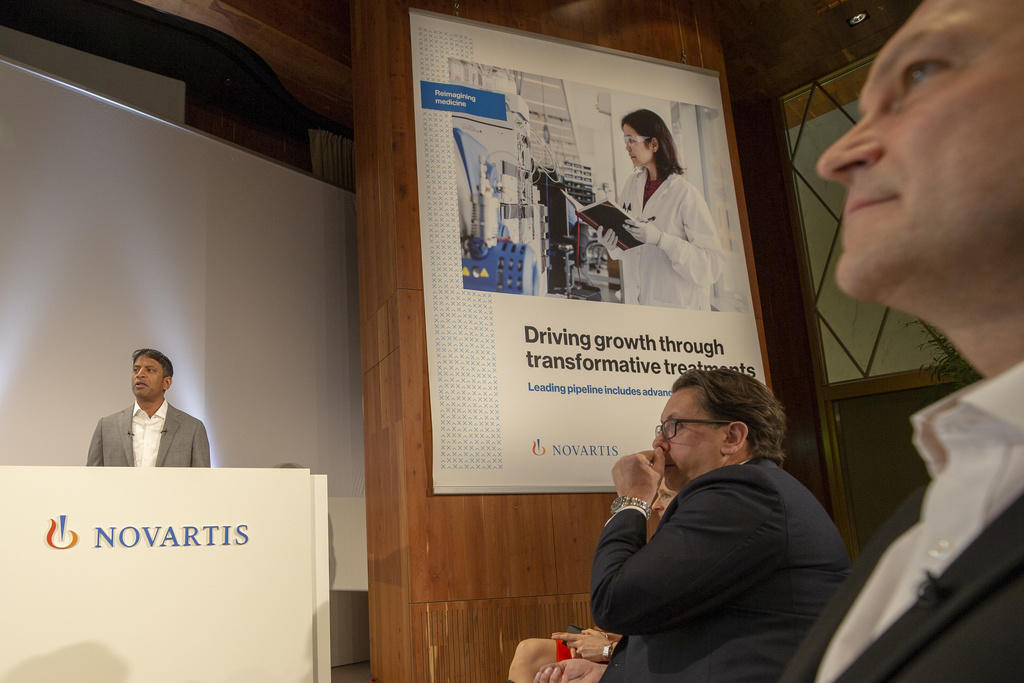Push for drug pricing transparency strikes a nerve with industry

Ahead of the World Health Assembly in Geneva, an Italian draft resolution to end secrecy around drug pricing has already ruffled feathers among some governments and industry players. Could Italy be on to something?
The resolutionExternal link proposed by Italy’s Minister of Health Giulia Grillo in February urges the World Health Organization (WHO) and governments to boost transparency in four areas: drug prices, R&D costs, clinical trial data, and patent information.
Arriving late in the typical resolution submission process, a frenzied review of the text revealed sharp divisionsExternal link among governments. It quickly gained widespread support from many NGOs and struck a nerve with some in the pharmaceutical industry.
The fact that documents from closed-door sessionsExternal link were made open-source by some media helped draw attention to the debate. But another reason the resolution is creating such buzz is that it shines a spotlight on the well-kept secrets around how drug prices are determined. This raises uncomfortable questions about which governments are benefiting from special deals and how companies might be profiting from high drug prices.
Switzerland has a stake in the discussions as a WHO member state but also as home to some of the largest pharmaceutical companies, including Roche and Novartis.
Why now?
Access to medicines has long been considered a developing country issue of vaccines and basic medicines. But the rise in chronic diseases and expensive life-saving treatments is bringing the access debate to rich countries worried about the burden on healthcare budgets. The sense of urgency is growing as people wrestle with the shock of a $475,000 cancer drug or a $4 million (CHF4 million) drug to treat spinal muscular atrophy.
Supporters of the resolution argue that transparency is essential to determine a fair price for medicinesExternal link and ultimately make them more affordable. A recent OECD reportExternal link on the industry reinforced this, stating that, “R&D costs and pricing structures are often opaque, raising legitimate questions about the value offered by some increasingly costly new treatments.”
WHO’s definition of a fair drug price
A ‘fair’ price is one that is affordable for health systems and patients and that at the same time provides sufficient market incentive for industry to invest in innovation and the production of medicines.
While transparency has been discussed in global health circles for years, Swiss Global Health Ambassador Nora Kronig told swissinfo.ch that seeing transparency as a way to improve access to medicines is a new development.
“This has become more important to member states as they face the huge challenge of rare diseases and expensive treatments for diseases like cancer,” she said.
In Switzerland, the cost of medicine per person has increased by 13% in just three years to CHF814 in 2017. The costs are largely driven by oncology and expensive combination therapies, explained the Federal Office of Public Health (FOPH) at a press conference earlier this month. The FOPH estimates that nearly half of the 90 or so requests for approval last year were for treatments exceeding CHF100,000 ($99,097) per person per year.
Late last year, the Federal Council (executive body) proposed a cost containment programmeExternal link recognizing the gravity of the situation.
Debates on the topic are not only raging in Switzerland. In February, seven executives of top pharmaceutical companies were grilled in a 3-hour US congressional hearingExternal link about skyrocketing drug prices. Lowering drug prices has become one of the rare issues on which a deeply divided US government agrees.
Even investors are sounding the alarm. At the Novartis annual general meetingExternal link a few days after the Senate hearing, Swiss shareholder group Actares said insurance systems are being “taken hostage” by high prices for life-saving drugs.
Sticking points
Kronig strongly supports transparency on prices at an international level.
Switzerland sets drug pricesExternal link based on a comparison to nine other countries and negotiations with individual manufacturers. But it is common knowledgeExternal link that many countries receive special discounts from companies on certain drugs. Kronig says “this means that the basket of prices we use for comparison is wrong. In a sense, we lose because we are the only ones that are transparent.”
But the industry is pushing back, arguing that transparency could have unintended consequences. Both Roche and Novartis referred swissinfo.ch to the International Federation of Pharmaceutical Manufacturers and Associations (IPFMA) for industry perspective.
Director General of IFPMA Thomas Cueni argues that “requiring the disclosure of confidential discounts and other commercial pricing arrangements would not benefit patients, but rather would impose new burdens on companies, could undermine differential pricing that benefits poorer countries, and disrupt market competition.”
Some recent researchExternal link also expresses concern that price transparency, particularly for on-patent medicines, could slow the diffusion of these products to poorer countries.
How transparent is Switzerland?
Based on the Freedom of Information ActExternal link that came into force in 2006, any Swiss citizens can request access to any public documents. There are some exceptions in cases of ongoing diplomatic negotiations, personal privacy, and national security.
When it comes to drug pricing, Kronig explains, “we are one of the only countries that are fully transparent about prices. There are no secret deals.” In the face of difficult negotiations with pharmaceutical companies, the FOPH recently introduced discounts, which it says is in place for about 20 or so treatments.
In effect, this means there are two prices for certain drugs. This double price list drew criticismExternal link from some NGOs for the lack of transparency after it was revealed by the Swiss public television programme RundschauExternal link a few months ago. Although the information about the discount priceExternal link is available, some NGOs argue that it is difficult to find and calculate.
There is even greater debate on other aspects of the resolution. Kronig explains that “transparency is an important part of building trust but there are a few cases where it can be counterproductive. We have to ask if transparency will help or hinder access?”
Cueni points out that transparency on R&D costs could discourage the introduction of innovative treatments and delay patient access to critically-needed and life-saving new medicines.
To Kronig, there isn’t enough clarity on what impact revealing R&D costs could have on innovation. And right now, she explains R&D costs are not factors Switzerland considers in price negotiations.
Patrick Durisch of the NGO Public Eye sees it differently. “How can any authority, not just the Swiss, set a price without knowing how much has been invested? What were the R&D costs? These are still considered a trade secret. Even the FOPH whose task is to set the price, does not know how much the R&D costs are. How do you want to set a fair price?”
Is there such a thing as a fair price?
What is a fair price for drugs has become the question shadowing the discussions on transparency. Companies have typically defended high prices by pointing to much needed investments in research and development. But more research from the WHOExternal link, Switzerland and elsewhere shows that prices are disconnected from costs and that drug company profits continue to riseExternal link.
Companies like Novartis and Roche have even said that costs are not the best way to determine prices. With new gene therapy treatments that cure diseases with a single treatment, they are calling for a shift to a value-based model based on patient outcomes and savings to hospitals and health systems.
Cueni backs this up saying that focusing narrowly on R&D costs and other inputs, does not say anything about the value that medicines provide to patients and health care systems.
+ Read more about Roche’s gene-targeting drug showing promise in brain tumors
But, this model is unlikely to simplify calculations when faced with the uncomfortable question of how much a life is worth.
Durisch says: “Imagine if we used value-based pricing for all goods. How much would you value a life vest or an airbag? How much is a life?”
Durisch believes that value-based pricing is a strategy of the pharmaceutical industry to avoid unveiling their real investment cost. “There are no limits [with value-based pricing] because basically every patient suffering from a deadly disease is ready to pay a lot for a medicine. You are just taking patients hostage. You are taking the government hostage.”
The fate of Italy’s resolution may be decided next week but whatever the outcome, it is unlikely that the topic will fade away anytime soon.

More
High pharma margins squeeze health systems

In compliance with the JTI standards
More: SWI swissinfo.ch certified by the Journalism Trust Initiative















You can find an overview of ongoing debates with our journalists here . Please join us!
If you want to start a conversation about a topic raised in this article or want to report factual errors, email us at english@swissinfo.ch.